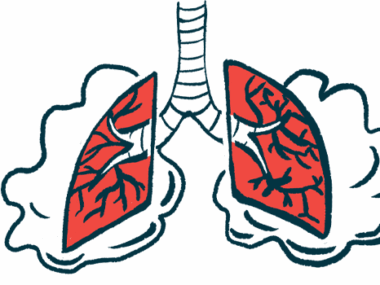Firdapse is effective in LEMS, even with delay in starting treatment
Therapy boosts muscle strength by increasing signal from nerve to muscle cells
Written by |

Firdapse (amifampridine) can help ease symptoms of Lambert-Eaton myasthenic syndrome (LEMS) in patients who don’t have an underlying cancer and its efficacy is consistent regardless of how long a delay there is before it’s started.
That’s according to a study, “Safety, efficacy and steroid-sparing effect of amifampridine in Lambert-Eaton myasthenic syndrome patients — real world data,” which was published in the Polish Journal of Neurology and Neurosurgery.
LEMS is an autoimmune disease marked by muscle weakness and lack of reflexes. Most cases are paraneoplastic, meaning they occur where there is an underlying cancer, most commonly lung cancer. But there are also cases of non-neoplastic LEMS where there is no underlying cancer.
Firdapse is an oral treatment approved for LEMS that boosts muscle strength by increasing the power of signals sent from nerve to muscle cells to instruct them to contract, a process that’s impaired in LEMS.
Here, scientists in Poland reported the outcomes of 14 people with non-neoplastic LEMS treated with Firdapse. The patients had a mean age of 48.8 and 42.9% were women. Many had notable diagnostic delays, with the time from the onset of symptoms to a LEMS diagnosis ranging from seven months to 22 years.
Gains with Firdapse
Most also had a fairly long delay between the onset of their LEMS symptoms and starting Firdapse. The mean delay was more than 11 years, with some waiting more than 25 years before starting treatment.
Patients’ muscle weakness was assessed with the Quantitative Myasthenia Gravis (QMG) scale, a standardized measure where higher scores are associated with more severe symptoms. An improvement (reduction) of at least 3 points in the QMG scale is considered clinically meaningful, that is, a change patients would likely notice in their daily lives.
After starting Firdapse, all the patients showed QMG score improvements. Mean QMG scores improved by more than 5 points, with 12 patients reporting a clinically meaningful improvement of at least 3 points. Scores on measures of lung function, grip strength, nerve signal transmission, and muscle response to stimuli also showed significant improvements.
“Our results confirm a satisfactory response to treatment with [Firdapse],” the researchers wrote, noting that improvements were seen “both clinically and electrophysiologically.”
Most patients (64.3%) were able to reduce their dose of corticosteroids, that is, immune-suppressing medicines like prednisone that are often used to help manage LEMS, but that carry high risks of side effects with long-term use.
“Reducing the [corticosteroid] dose while improving the function of the patients is one of the most important aims of the treatment and was achieved in over 60% of our patients treated with [Firdapse],” the researchers wrote.
There was no correlation between the delay in starting Firdapse and the benefits gained from treatment, statistical analyses showed.
Firdapse also was generally well tolerated, with no serious safety issues reported. The most common side effect of the therapy was paresthesia, or an unusual sensation like tingling or numbness around the mouth and in the arms and legs.
“We conclude that [Firdapse] is effective in patients regardless of disease duration or treatment delay,” the scientists wrote.
Firdapse is sold in Europe by BioMarin Pharmaceutical, which was not involved in the study.






